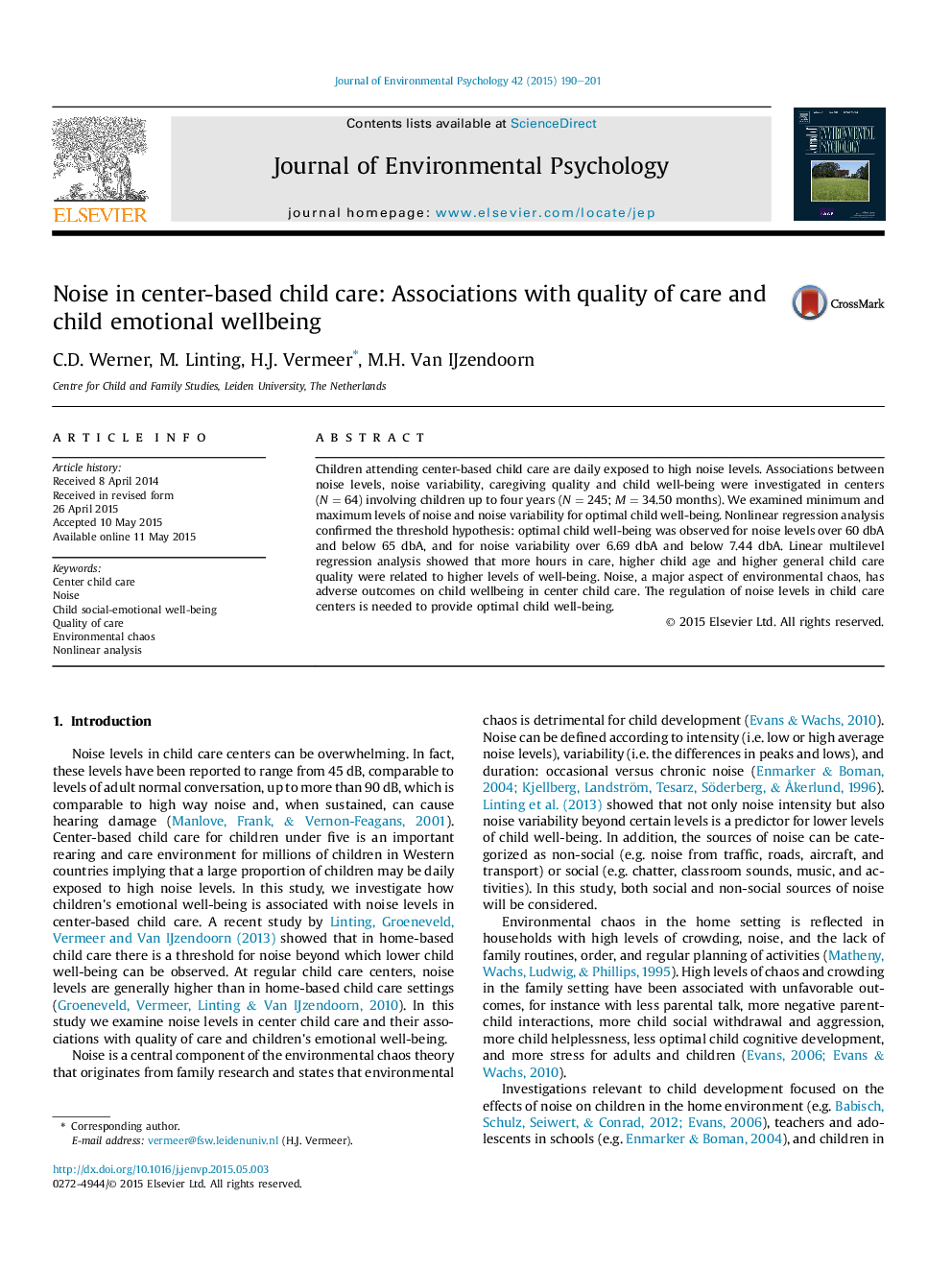| Article ID | Journal | Published Year | Pages | File Type |
|---|---|---|---|---|
| 7245905 | Journal of Environmental Psychology | 2015 | 12 Pages |
Abstract
Children attending center-based child care are daily exposed to high noise levels. Associations between noise levels, noise variability, caregiving quality and child well-being were investigated in centers (NÂ =Â 64) involving children up to four years (NÂ =Â 245; MÂ =Â 34.50 months). We examined minimum and maximum levels of noise and noise variability for optimal child well-being. Nonlinear regression analysis confirmed the threshold hypothesis: optimal child well-being was observed for noise levels over 60Â dbA and below 65 dbA, and for noise variability over 6.69Â dbA and below 7.44Â dbA. Linear multilevel regression analysis showed that more hours in care, higher child age and higher general child care quality were related to higher levels of well-being. Noise, a major aspect of environmental chaos, has adverse outcomes on child wellbeing in center child care. The regulation of noise levels in child care centers is needed to provide optimal child well-being.
Related Topics
Social Sciences and Humanities
Psychology
Applied Psychology
Authors
C.D. Werner, M. Linting, H.J. Vermeer, M.H. Van IJzendoorn,
